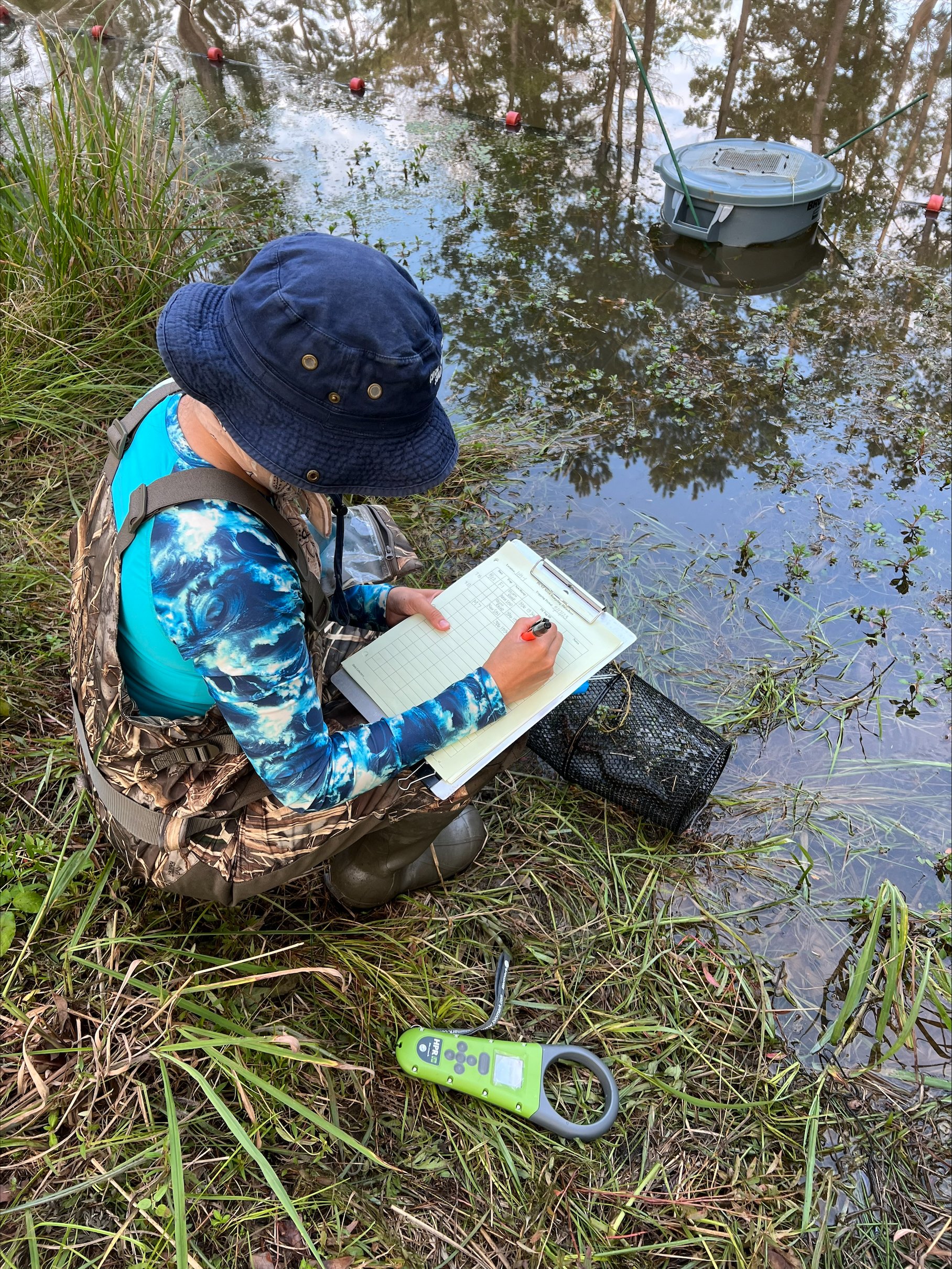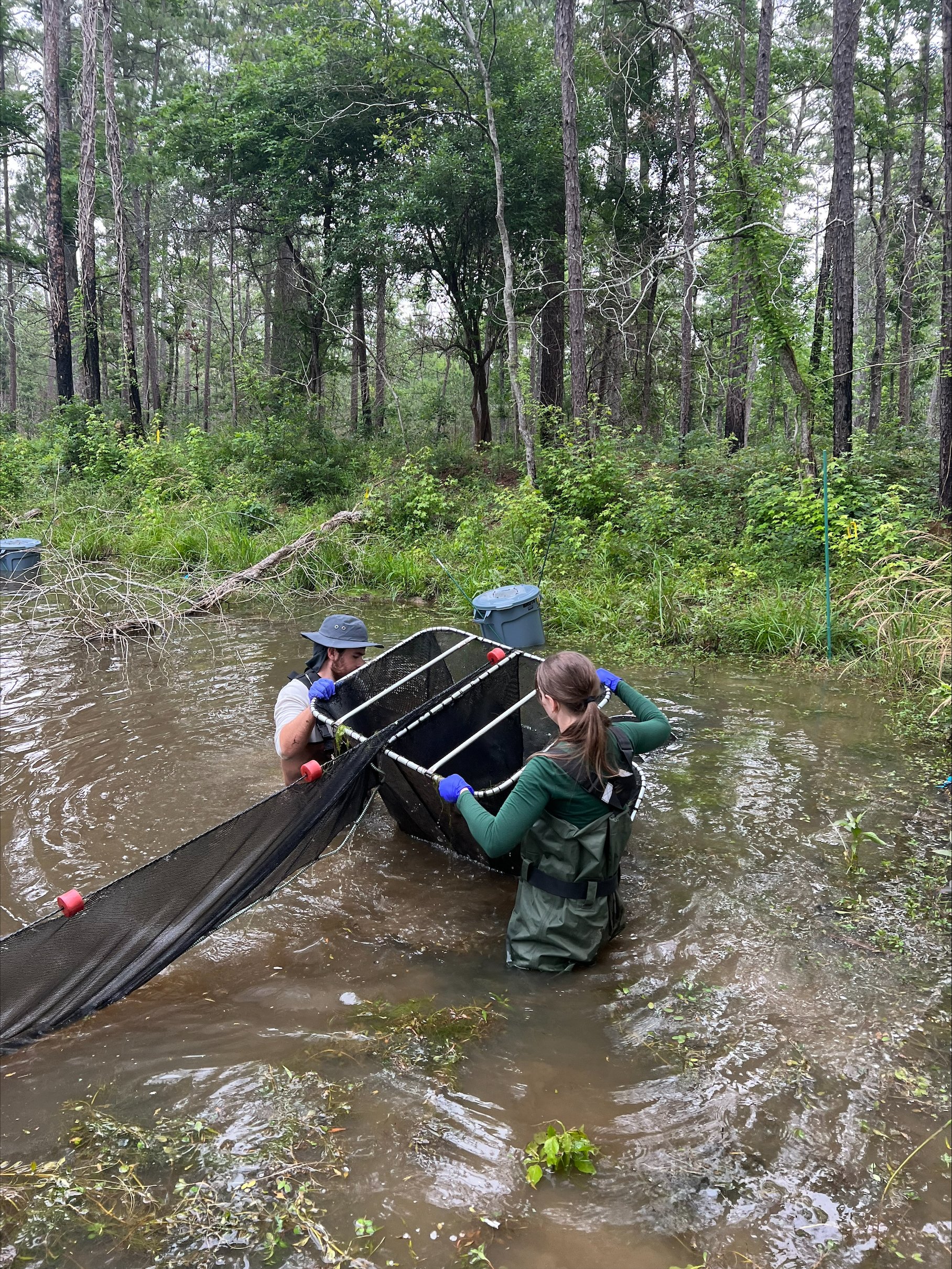
Meet our grantees
Wild Animal Initiative funds academic research on high-priority questions in wild animal welfare.
The goal of our grants program is to fund research that deepens scientific knowledge of the welfare of wild animals in order to better understand how to improve the welfare of as many wild animals as possible, regardless of what causes the threats to their well-being.
We showcase our grantees and their projects here and continuously update this page as new projects are added.
Novel epigenetic approaches to measure wild animal welfare and stress
Grantee: Dave Daversa
Institution: University of California, Los Angeles
Project summary
A challenge in wild animal welfare science is developing composite assays that consider the full breadth of factors collectively shaping subjective experiences. This project will demonstrate proof of concept for a DNA methylation (DNAm)-based model of wild animal welfare, characterizing DNAm in western toads. It will test the influence of infection with Batrachochytrium dendrobatidis (Bd) on DNAm and its covariance with demographic factors such as age, sex, and body condition. Captive-reared toads will be sampled to characterize DNAm under controlled conditions, providing a standardized profile of DNAm rates over toad life stages. The researchers will then sample toads from wild populations experiencing starkly different levels of Bd infection, with accelerated biological aging signaling elevated stress and impaired welfare.
Grantee: Dave Daversa
Institution: University of California, Los Angeles, United States
Grant amount: $30,000
Grant type: Small grants
Focal species: Western toad (Anaxyrus boreas)
Conservation status: Least concern
Disciplines: Physiology, herpetology, animal welfare science, population ecology, genetics/genomics
Research location: United States
Project summary
A major challenge in wild animal welfare science lies in developing composite assays that consider the full breadth of factors collectively shaping the subjective experiences of animals. This project will apply epigenetic tools to develop minimally invasive and aggregate measures of wild animal welfare. Specifically, the researchers aim to demonstrate proof of concept for a DNA methylation (DNAm)-based model of wild animal welfare. DNAm joins other measurements such as telomere attrition as a biomarker of biological aging, because DNA becomes methylated as a function of both chronological age (time) and accumulated stress. This project will characterize DNAm in western toads (Anaxyrus boreas) from wild populations in southern California, testing the influence of infection with the fungal pathogen Batrachochytrium dendrobatidis (Bd) on DNAm, and its covariance with demographic factors such as age and sex, as well as with body condition, a common metric of physical health in wild animals. Captive-reared toads representing all life stages will be sampled to characterize DNAm under controlled conditions, providing a standardized profile of DNAm rates over toad life stages. The researchers will then sample toads from wild populations experiencing starkly different levels of environmental stress (Bd infection), with accelerated biological aging signaling elevated stress and impaired welfare.
Project objectives
Objective 1: Determine the relationship between DNAm and basic risk factors linked to welfare: chronological age, sex, weight, and infection status.
Objective 2: Determine the effect of environmental stressors on epigenetic age.
Why we funded this project
We funded this project because we are interested in the potential for biological aging biomarkers to be used as very long-term, integrative metrics of animals’ lifetime welfare. DNAm is one such potential biomarker that has received relatively little attention in a welfare context. However, DNAm may potentially be easier to measure than more commonly discussed measures of biological age — or at least, be more familiar for mainstream ecological genetics researchers — because DNA methylation is already of interest for other reasons in biological science. We were particularly enthusiastic about this project because it focuses on a species belonging to a large species complex of amphibians, including both common and threatened species, offering broad transferability and potential impact. Amphibians are also relatively neglected in terms of welfare research. We appreciate that this project aims to establish baseline age-specific differences in biological aging rate in order to then assess age-specific differences attributable to different exposures (i.e., age-specific differences in welfare), which connects to the concept of “welfare expectancy” developed by Wild Animal Initiative researcher Luke Hecht.
Find Dave’s other project, studying western fence lizards, here.
Photos
Integrating individual-level juvenile welfare in dynamic habitats across time and space
Grantee: Tom Luhring
Institution: Wichita State University, Texas State University, and Stephen F. Austin University
Project summary
The project will track four populations of juvenile lesser sirens in Eastern Texas within and across years. Sirens’ health is directly affected by their environment through the impacts of resource availability on body condition and growth rates. Furthermore, sirens show strong size-dependent and seasonal shifts in antagonistic behaviors, which lead to acute injuries. This project will use water-borne corticosterone release rates to investigate changes in stress physiology as a function of changes in the environment experienced by the individual (population density, drought severity index, water temperature, pH, conductivity) across time and space to understand coping capacity. This data will also be used to investigate the welfare impact of an established marking technique compared to a novel machine-learning approach.
Grantee: Tom Luhring
Institutions: Wichita State University, Texas State University, and Stephen F. Austin University, United States
Grant amount: $162,604
Grant type: Challenge grants
Focal species: Sirens (Siren intermedia)
Conservation status: Least concern
Disciplines: Herpetology, physiology, climate science
Research location: United States
Project summary
The project will track individual juvenile lesser sirens (Siren intermedia) within and across years for four populations in Eastern Texas. The lack of a terrestrial life-stage and severely limited overland dispersal ability means that hydrologically isolated pools function as closed populations, facilitating recaptures and simplifying demographic estimates. Siren health is directly impacted by the effects of the environment (e.g., drought conditions) through the impacts of resource availability on body condition and growth rates. Furthermore, sirens show strong size-dependent and seasonal shifts in antagonistic behaviors such as biting which lead to acute injuries.
Aquatic amphibians are especially well-suited for the collection of water-borne stress hormones (corticosterone), which offer the least invasive method of evaluating an integrated measure of corticosterone levels that are passively being released through the skin, gills, feces, and urine. This project will use water-borne corticosterone release rates to investigate changes in stress physiology as a function of changes in the environment experienced by the individual (population density, drought severity index, water temperature, pH, conductivity) across time and space to understand coping capacity. These data will also be used to investigate the welfare impact of an established marking technique compared to a novel approach based on pattern recognition by a machine-learning algorithm.
Why we funded this project
Juvenile mortality is especially high in amphibians, and amphibian welfare in general is a neglected subject. This project should provide proof of concept for a cost-effective approach for assessing welfare at both an individual and population level. The waterborne measurements have the potential to integrate corticosterone over a longer period of time, increasing its reliability as a welfare indicator. Finally, this project will test a novel, non-invasive approach to mark-recapture studies, which could facilitate much better individual-level welfare research for amphibians and other (especially aquatic) animals in the future.
Photos
Does population density influence the welfare of wild newts?
Grantee: Luiza Figueiredo Passos
Institution: Liverpool John Moores University
Project summary
This project will explore how the welfare of the widespread great crested newt (Triturus cristatus) is influenced by population density. It will test the hypothesis that optimal conditions for population sustainability could be suboptimal at the individual level, and consequently negative for welfare. The researchers will study the welfare of newts in populations with varying densities throughout England. Welfare will be assessed using the Five Domains Model by collecting measures of health, behavior, and nutrition. Environmental parameters will also be collected to assess the relationship between habitat quality and welfare.
Grantee: Luiza Figueiredo Passos
Institution: Liverpool John Moores University, United Kingdom
Grant amount: $158,060
Grant type: Challenge grants
Focal species: Great crested newt (Triturus cristatus)
Conservation status: Least concern
Disciplines: Physiology, animal behavior, herpetology
Research location: United Kingdom
Project summary
The project seeks to determine how the welfare of the widespread species of great crested newts, Triturus cristatus, is influenced by population density in order to help determine how management practices can foster the welfare of individuals. Based on previous studies that have shown that population size and density correlate negatively with body condition and adult survivorship, this study will test the hypothesis that optimal conditions for population sustainability (i.e., conditions that result in higher juvenile survival) could be suboptimal at the individual level, and consequently negative for welfare. The project will study the welfare of newts in populations with varying densities at different locations in England. Welfare will be assessed using the Five Domains model of animal welfare by collecting measures of health (presence of injuries or diseases, corticosterone level, and telomere attrition), behavior (expression of abnormal behavior, flight response, behavioral restriction), and nutrition (body condition, food availability). Environmental parameters (water quality, shelter availability, predator pressure, proximity to anthropogenic threats) will also be collected to assess the relationship between habitat quality and welfare.
Why we funded this project
We funded this project because it will assess density-dependent welfare using a diverse battery of indicators. It is especially exciting to see them applied to a highly abundant amphibian, as the overwhelming majority of wild animal welfare projects have focused on mammals or birds. The proposing team is also very well qualified and has previously been funded by Wild Animal Initiative, which makes them well-suited to take on an analytically challenging project to disentangle influences of population density on newt welfare.
Find Luiza’s other project, studying house sparrows, here.








